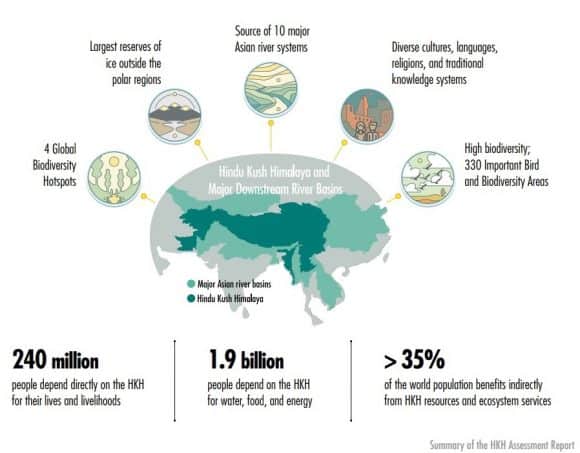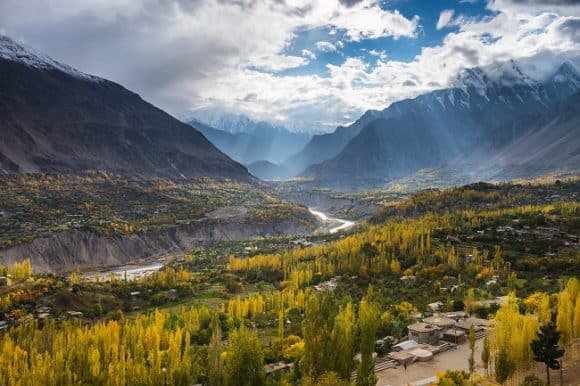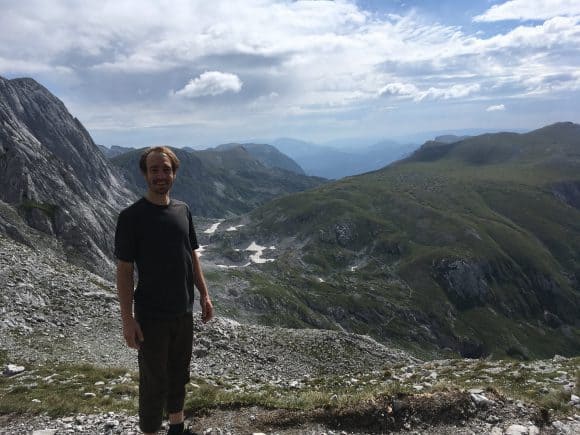May 29, 2019 | Science and Policy, Vietnam
Tran Thi Vo-Quyen, IIASA guest research scholar from the Vietnam Academy of Science and Technology (VAST), talks to Professor Dr. Ninh Khac Ban, Director General of the International Cooperation Department at VAST and IIASA council member for Vietnam, about achievements and challenges that Vietnam has faced in the last 5 years, and how IIASA research will help Vietnam and VAST in the future.

Professor Dr. Ninh Khac Ban, Director General of the International Cooperation Department at VAST and IIASA council member for Vietnam
What have been the highlights of Vietnam-IIASA membership until now?
In 2017, IIASA and VAST researchers started working on a joint project to support air pollution management in the Hanoi region which ultimately led to the successful development of the IIASA Greenhouse Gas – Air Pollution Interactions and Synergies (GAINS) model for the Hanoi region. The success of the project will contribute to a system for forecasting the changing trend of air pollution and will help local policy makers develop cost effective policy and management plans for improving air quality, in particular, in Hanoi and more widely in Vietnam.
IIASA capacity building programs have also been successful for Vietnam, with a participant of the 2017 Young Scientists Summer Program (YSSP) becoming a key coordinator of the GAINS project. VAST has also benefited from two members of its International Cooperation Department visiting the IIASA External Relations Department for a period of 3 months in 2018 and 2019, to learn about how IIASA deals with its National Member Organizations (NMOs) and to assist IIASA in developing its activities with Vietnam.
What do you think will be the key scientific challenges to face Vietnam in the next few years? And how do you envision IIASA helping Vietnam to tackle these?
In the global context Vietnam is facing many challenges relating to climate change, energy issues and environmental pollution, which will continue in the coming years. IIASA can help key members of Vietnam’s scientific community to build specific scenarios, access in-depth knowledge and obtain global data that will help them advise Vietnamese government officials on how best they can overcome the negative impact of these issues.
As Director General of the International Cooperation Department, can you explain your role in VAST and as representative to IIASA in a little more detail?
In leading the International Cooperation Department at VAST, I coordinate all collaborative science and technology activities between VAST and more than 50 international partner institutions that collaborate with VAST.
As the IIASA council representative for Vietnam, I participate in the biannual meeting for the IIASA council, I was also a member of the recent task force developed to implement the recommendations of a recent independent review of the institute. I was involved in consulting on the future strategies, organizational structure, NMO value proposition and need to improve the management system of IIASA.
In Vietnam, I advised on the establishment of a Vietnam network for joining IIASA and I implement IIASA-Vietnam activities, coordinating with other IIASA NMOs to ensure Vietnam is well represented in their countries.
You mentioned the development of the Vietnam-IIASA GAINS Model. Can you explain why this was so important to Vietnam and how it is helping to improve air quality and shape Vietnamese policy around air pollution?
Air pollution levels in Vietnam in the last years has had an adverse effect on public health and has caused significant environmental degradation, including greenhouse gas (GHG) emissions, undermining the potential for sustainable socioeconomic development of the country and impacting the poor. It was important for Vietnam to use IIASA researchers’ expertise and models to help them improve the current situation, and to help Vietnam in developing the scientific infrastructure for a long-lasting science-policy interface for air quality management.
The project is helping Vietnamese researchers in a number of ways, including helping us to develop a multi-disciplinary research community in Vietnam on integrated air quality management, and in providing local decision makers with the capacity to develop cost-effective management plans for the Hanoi metropolitan area and surrounding regions and, in the longer-term, the whole of Vietnam.
About VAST and Ninh Khac Ban
VAST was established in 1975 by the Vietnamese government to carry out basic research in natural sciences and to provide objective grounds for science and technology management, for shaping policies, strategies and plans for socio-economic development in Vietnam. Ninh Khac Ban obtained his PhD in Biology from VAST’s Institute of Ecology and Biological Resources in 2001. He has managed several large research projects as a principal advisor, including several multinational joint research projects. His successful academic career has led to the publication of more than 34 international articles with a high ranking, and more than 60 national articles, and 2 registered patents. He has supervised 5 master’s and 9 PhD level students successfully to graduation and has contributed to pedagogical texts for postgraduate training in his field of expertise.
Notes:
More information on IIASA and Vietnam collaborations. This article gives the views of the authors, and not the position of the Nexus blog, nor of the International Institute for Applied Systems Analysis.
May 24, 2019 | Energy & Climate, Poverty & Equity, Sustainable Development
By Pallav Purohit, researcher with the IIASA Air Quality and Greenhouse Gases Program
More than 300 million people in Hindu Kush Himalaya-countries still lack basic access to electricity. Pallav Purohit writes about recent research that looked into how the issue of energy poverty in the region can be addressed.
The Hindu Kush Himalayas is one of the largest mountain systems in the world, covering 4.2 million km2 across eight countries: Afghanistan, Bangladesh, Bhutan, China, India, Myanmar, Nepal, and Pakistan. The region is home to the world’s highest peaks, unique cultures, diverse flora and fauna, and a vast reserve of natural resources.
Ensuring access to affordable, reliable, sustainable, and modern energy for all – the UN’s Sustainable Development Goal (SDG) 7 – has however been especially elusive in this region, where energy poverty is shockingly high. About 80% of the population don’t have access to clean energy and depend on biomass – mostly fuelwood – for both cooking and heating. In fact, over 300 million people in Hindu Kush Himalaya-countries still lack basic access to electricity, while vast hydropower potentials remain largely untapped. Although a large percentage of these energy deprived populations live in rural mountain areas that fall far behind the national access rates, mountain-specific energy access data that reflects the realities of mountain energy poverty barely exists.

Source: Wester et al. (2019)
The big challenge in this regard is to simultaneously address the issues of energy poverty, energy security, and climate change while attaining multiple SDGs. The growing sectoral interdependencies in energy, climate, water, and food make it crucial for policymakers to understand cross-sectoral policy linkages and their effects at multiple scales. In our research, we critically examined the diverse aspects of the energy outlook of the Hindu Kush Himalayas, including demand-and-supply patterns; national policies, programmes, and institutions; emerging challenges and opportunities; and possible transformational pathways for sustainable energy.
Our recently published results show that the region can attain energy security by tapping into the full potential of hydropower and other renewables. Success, however, will critically depend on removing policy-, institutional-, financial-, and capacity barriers that now perpetuate energy poverty and vulnerability in mountain communities. Measures to enhance energy supply have had less than satisfactory results because of low prioritization and a failure to address the challenges of remoteness and fragility, while inadequate data and analyses are a major barrier to designing context specific interventions.
In the majority of Hindu Kush Himalaya-countries, existing national policy frameworks currently primarily focus on electrification for household lighting, with limited attention paid to energy for clean cooking and heating. A coherent mountain-specific policy framework therefore needs to be well integrated in national development strategies and translated into action. Quantitative targets and quality specifications of alternative energy options based on an explicit recognition of the full costs and benefits of each option, should be the basis for designing policies and prioritizing actions and investments. In this regard, a high-level, empowered, regional mechanism should be established to strengthen regional energy trade and cooperation, with a focus on prioritizing the use of locally available energy resources.

© Kriangkraiwut Boonlom | Dreamstime.com
Some countries in the region have scaled up off-grid initiatives that are globally recognized as successful. We however found that the special challenges faced by mountain communities – especially in terms of economies of scale, inaccessibility, fragility, marginality, access to infrastructure and resources, poverty levels, and capability gaps – thwart the large-scale replication of several best practice innovative business models and off-grid renewable energy solutions that are making inroads into some Hindu Kush Himalayan countries.
This further highlights an urgent need to establish supportive policy, legal, and institutional frameworks as well as innovations in mountain-specific technology and financing. In addition, enhanced multi-stakeholder capacity building at all levels will be needed for the upscaling of successful energy programs in off-grid mountain areas.
Finally, it is important to note that sustainable energy transition is a shared responsibility. To accelerate progress and make it meaningful, all key stakeholders must work together towards a sustainable energy transition. The world needs to engage with the Hindu Kush Himalayas to define an ambitious new energy vision: one that involves building an inclusive green society and economy, with mountain communities enjoying modern, affordable, reliable, and sustainable energy to improve their lives and the environment.
References:
[1] Dhakal S, Srivastava L, Sharma B, Palit D, Mainali B, Nepal R, Purohit P, Goswami A, et al. (2019). Meeting Future Energy Needs in the Hindu Kush Himalaya. In: The Hindu Kush Himalaya Assessment. pp. 167-207 Cham, Switzerland: Springer. ISBN 978-3-319-92287-4 [pure.iiasa.ac.at/15666]
[2] Wester P, Mishra A, Mukherji A, Shrestha AB (2019). The Hindu Kush Himalaya Assessment: Mountains, Climate Change, Sustainability and People. Cham, Switzerland: Springer. ISBN 978-3-319-92287-4.
Note: This article gives the views of the author, and not the position of the Nexus blog, nor of the International Institute for Applied Systems Analysis.
Mar 29, 2019 | USA, Young Scientists
By Matt Cooper, PhD student at the Department of Geographical Sciences, University of Maryland, and 2018 winner of the IIASA Peccei Award
I never pictured myself working in Europe. I have always been an eager traveler, and I spent many years living, working and doing fieldwork in Africa and Asia before starting my PhD. I was interested in topics like international development, environmental conservation, public health, and smallholder agriculture. These interests led me to my MA research in Mali, working for an NGO in Nairobi, and to helping found a National Park in the Philippines. But Europe seemed like a remote possibility. That was at least until fall 2017, when I was looking for opportunities to get abroad and gain some research experience for the following summer. I was worried that I wouldn’t find many opportunities, because my PhD research was different from what I had previously done. Rather than interviewing farmers or measuring trees in the field myself, I was running global models using data from satellites and other projects. Since most funding for PhD students is for fieldwork, I wasn’t sure what kind of opportunities I would find. However, luckily, I heard about an interesting opportunity called the Young Scientists Summer Program (YSSP) at IIASA, and I decided to apply.
Participating in the YSSP turned out to be a great experience, both personally and professionally. Vienna is a wonderful city to live in, and I quickly made friends with my fellow YSSPers. Every weekend was filled with trips to the Alps or to nearby countries, and IIASA offers all sorts of activities during the week, from cultural festivals to triathlons. I also received very helpful advice and research instruction from my supervisors at IIASA, who brought a wealth of experience to my research topic. It felt very much as if I had found my kind of people among the international PhD students and academics at IIASA. Freed from the distractions of teaching, I was also able to focus 100% on my research and I conducted the largest-ever analysis of drought and child malnutrition.

© Matt Cooper
Now, I am very grateful to have another summer at IIASA coming up, thanks to the Peccei Award. I will again focus on the impact climate shocks like drought have on child health. however, I will build on last year’s research by looking at future scenarios of climate change and economic development. Will greater prosperity offset the impacts of severe droughts and flooding on children in developing countries? Or does climate change pose a hazard that will offset the global health gains of the past few decades? These are the questions that I hope to answer during the coming summer, where my research will benefit from many of the future scenarios already developed at IIASA.
I can’t think of a better research institute to conduct this kind of systemic, global research than IIASA, and I can’t picture a more enjoyable place to live for a summer than Vienna.
Note: This article gives the views of the author, and not the position of the Nexus blog, nor of the International Institute for Applied Systems Analysis.
Oct 16, 2018 | Alumni, Climate Change, Environment, Science and Policy, Women in Science, Young Scientists

Laura Mononen experiencing a creative ”world flow” in the art installation ‘Passage’ by Matej Kren in Bratislava | © Kati Niiles
By Sandra Ortellado, IIASA 2018 Science Communication Fellow
If fashion is the science of appearances, what can beauty and aesthetics tell us about the way we perceive the world, and how it influences us in turn?
From cognitive science research, we know that aesthetics not only influence superficial appearances, but also the deeper ways we think and experience. So, too, do all kinds of creative thinking create change in the same way: as our perceptions of the world around us changes, the world we create changes with them.
From the merchandizing shelves of H&M and Vero Moda to doctoral research at the Faculty of Information Technology at the University of Jyväskylä, Finland, 2018 YSSP participant Laura Mononen has seen product delivery from all angles. Whether dealing with commercialized goods or intellectual knowledge, Mononen knows that creativity is all about a change in thinking, and changing thinking is all about product delivery.
“During my career in the fashion and clothing industry, I saw the different levels of production when we sent designs to factories, received clothing back, and then persuaded customers to buy them. It was all happening very effectively,” says Mononen.
But Mononen saw potential for product delivery beyond selling people things they don’t need. She wanted to transfer the efficiency of the fashion world in creating changes in thinking to the efforts to build a sustainable world.
“Entrepreneurs make change with products and companies, fashion change trends and sell them. I’m really interested in applying this kind of change to science policy and communication,” says Mononen. “We treat these fields as though they are completely different, but the thing that is common is humans and their thinking and behaving.”
Often, change must happen in our thinking first before we can act. That’s why Mononen is getting her doctorate in cognitive science. Her YSSP project involved heavy analysis of systems theories of creativity to find patterns in the way we think about creativity, which has been constantly changing over time.
In the past, creativity was seen as an ability that was characteristic of only certain very gifted individuals. The research focused on traits and psychological factors. Today, the thinking on creativity has shifted towards a more holistic view, incorporating interactions and relationships between larger systems. Instead of being viewed as a lightning bolt of inspiration, creativity is now seen as more of a gradual process.
New understandings of creativity also call on us to embrace paradoxes and chaos, see ourselves as part of nature rather than separate from it, experience the world through aesthetics, pay careful attention to our perception and how we communicate it, and transmit culture to the next generation.
Perhaps most importantly, Mononen found in her research that the understanding of creativity has changed to be seen as part of a process of self-creation as well as co-creation.
“The way we see creativity also influences ourselves. For example if I ask someone if they are creative, it’s the way they see themselves that influences how creative they are,” says Mononen. “I have found that it’s more crucial to us than I thought, creativity is everywhere and it’s everyday and we are sharing our creativity with others who are using that to do something themselves and so on.”
This means on the one hand that we use our creativity to decide who we are and how we see the world around us for ourselves. But it also means that the outcomes and benefits of creativity are now intended for society as a whole rather than purely for individuals, as it was in the past. It may sound like another paradox, but being able to embrace ambiguity and complexity and take charge of our role in a larger system is important for creating a sustainable future.
“From the IIASA perspective this finding brings hope because the more people see themselves as part of systems of creating things, the more we can encourage sustainable thinking, since nature is a part of the resources we use to create,” says Mononen.
Mononen says a systems understanding of creativity is especially important for people in leadership positions. If a large institution needs new and innovative solutions and technology, but doesn’t have the thinking that values and promotes creativity, then the cooperative, open-minded process of building is stifled.
Working in both the fashion industry and academic research, Mononen has encountered narrow-minded attitudes towards art and science firsthand.
“Communicating your research is very difficult coming from my background, because you don’t know how the other person is interpreting what you say,” says Mononen. “People have different ideas of what fashion and aesthetics are, how important they are and what they do. Additionally, scientific concepts are used differently in different fields.”
“We are often thinking that once we get information out there, then people will understand, but there are much more complex things going on to make change and create influence in settings that combine several different fields.” says Mononen.
For Mononen, the biggest lesson is that creativity can enhance the efforts of science towards a sustainable world simply by encouraging us to be aware of our own thinking, how it differs from that of others, and how it affects all of us.
“When you become more aware of your ways of thinking, you become more effective at communicating,” says Mononen. “It’s not always that way and it’s very challenging, but that’s what the research on creativity from a systems perspective is saying.”
Oct 5, 2018 | Climate, Climate Change, Ecosystems, Environment, Food, Food & Water, History, Young Scientists

© Marcus Thomson
By Marcus Thomson, researcher, IIASA Ecosystems Services and Management Program
While living in Cairo in 2010, I witnessed first-hand the human toll of political and environmental disasters that washed over Africa at the end of the last century. Unprecedented numbers of migrants were pressing into North Africa, many pushed out of their homelands by conflict and state-failure, pulled towards safer, richer, less fragile places like Europe. Throughout Sub-Saharan Africa, climate change was driving up competition for scarce land and water, and raising pressure on farmers to maintain the quantity and quality of their crops.
It is a similar story throughout the developing world, where many farmers do without the use of expensive chemical fertilizer and pesticides, complex irrigation, or boutique seed varieties. They rely instead on traditional land management practices that developed over long periods with consistent, predictable conditions. It is difficult to predict how dryland farmers will respond to climate change; so it is challenging to plan for various social, economic, and political problems expected to develop under, or be exacerbated by, climate change. Will it spur innovation or, as has been argued for the Syrian civil war[1], set up conflict? A major stumbling block is that the dynamics of human social behavior are so difficult to model.
Instead of attempting to predict farmers’ responses to climate change by modelling human behavior, we can look to the responses to environmental changes of farmers from the past as analogues for many subsistence farmers of the future. Methods to fill in historical gaps, and reconstruct the prehistoric record, are valuable because they expand the set of observed cases of societal-scale responses to environmental change. For instance, some 2000 years ago, an expansive maize-growing cultural complex, the Ancestral Puebloans (APs), was well established in the arid American Southwest. By AD 1000, members of this AP complex produced unique and innovative material culture including the famed “Great Houses”, the largest built structures in the United States until the 19th century. However, between AD 1150 and 1350, there was a profound demographic transformation throughout the Southwest linked to climate change. We now know that many APs migrated elsewhere. As a PhD student at the University of California, Los Angeles, I wondered whether a shift to cooler, more variable conditions of the “Little Ice Age” (LIA, roughly AD 1300 to 1850) was linked to the production of their staple crop, maize.
I came to IIASA as a YSSP in 2016 to collaborate with crop modelers on this question, and our work has just been published in the journal Quaternary International.[2] I brought with me high-resolution data from a state-of-the-art climate model to drive the crop simulations, and AP site information collected by archaeologists. Because AP maize was quite different from modern corn, I worked with IIASA soil scientist Juraj Balkovič to modify the crop simulator with parameters derived from heirloom varieties still grown by indigenous peoples in the Southwest. I and IIASA economic geographer Tamás Krisztin developed a statistical technique to analyze the dynamical relationship between AP site occupation and simulated yield outcomes.
We found that for the most climate-stressed high-elevation sites, abandonments were most associated with increased year-to-year yield variability; and for the least stressed low-elevation and well-watered sites, abandonment was more likely due to endogenous stressors, such as soil degradation and population pressure. Crucially, we found that across all regions, populations peaked during periods of the most stable year-to-year crop yields, even though these were also relatively warm and dry periods. In short, we found that AP maize farmers adapted well to gradually rising temperatures and drought, during the MCA, but failed to adapt to increased climate variability after ~AD 1150, during the LIA. Because increased variability is one of the near certainties for dryland farming zones under global warming, the AP experience offers a cautionary example of the limits of low-technology adaptation to climate change, a business-as-usual direction for many sub-Saharan dryland farmers.
This is a lesson from the past that policymakers might take note of.
[1] Kelley, C. P., Mohtadi, S., Cane, M. A., Seager, R., & Kushnir, Y. (2015). Climate change in the Fertile Crescent and implications of the recent Syrian drought. Proceedings of the National Academy of Sciences, 201421533.
[2] Thomson, M. J., Balkovič, J., Krisztin, T., MacDonald, G. M. (2018). Simulated crop yield for Zea mays for Fremont Ancestral Puebloan sites in Utah between 850-1499 CE based on temperature dailies from a statistically downscaled climate model. Quaternary International. https://doi.org/10.1016/j.quaint.2018.09.031







You must be logged in to post a comment.